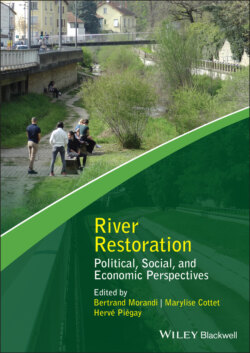Читать книгу River Restoration - Группа авторов - Страница 46
2.2.3 Challenge 3: multiple stakeholders
ОглавлениеThis brings us to a third important challenge: rivers often constitute focal points for human activity, such that their use and degradation – and potentially also their restoration – involves a multiplicity of different actors. So, whereas in other cases – especially the paradigmatic instances of “malicious restorations” criticized by Light (2000, p. 98) – the destruction or degradation of the original ecosystem is the result of one party, acting for one purpose, over one specific period of time, in the case of rivers there will often be a multiplicity of parties using and degrading the river in a large number of ways, for a large number of reasons, and over extended and ill‐defined periods of time, as is perhaps most obviously the case regarding such large and historically important rivers as the Ganges in India or the Yangtze in China. With this in mind, it is also instructive to consider the defense put forward by Light and Higgs (1996, p. 236) of restoration as having an “inherent democratic potential,” for it allows humans collectively to participate in nature. While this may not be true in all cases – it is surely not unreasonable, for example, to expect a company whose strip mine has destroyed a wild ecosystem to undertake the restoration efforts itself rather than expecting local volunteers to do it – in the case of river restorations it is clear that there will usually be significant potential for something like the sort of participative democratic restoration advocated by Light and Higgs. Of course, this is not necessarily to say that the restoration will always – or even usually – be able to embody the sort of democratic equality between participants one finds when members of a local community all muck in to clean up a local stream (Light 2001). Particularly when we factor in the first two challenges discussed above, it is clear that river restoration will often require the involvement of a large number of stakeholders, contributing in a wide number of different ways, including potentially complex engineering work necessarily carried out by specialists (dam removal, re‐meandering, etc.), but it is nevertheless true that river restoration has the potential to act as a focal point for a wide number of stakeholders to act together toward a common goal.
